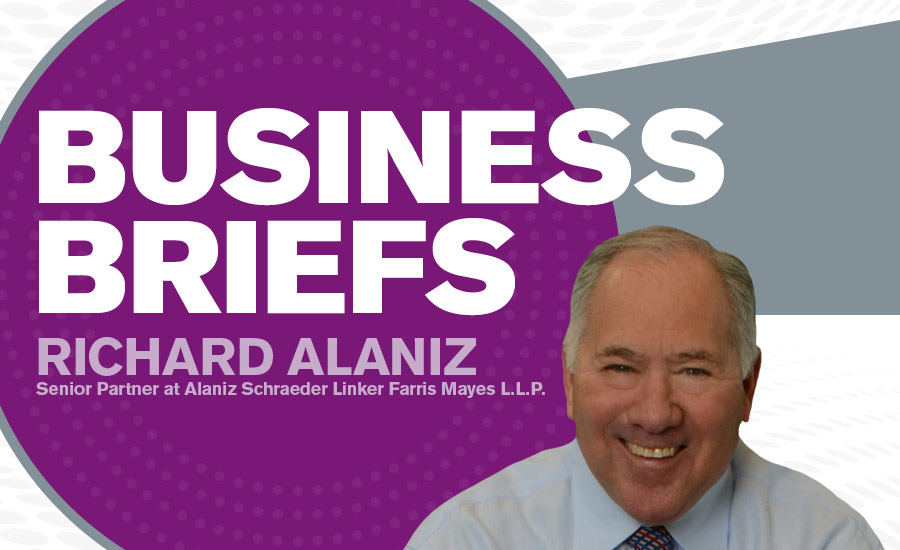Election years often bring a flurry of legislative and regulatory activity. And this presidential election year is no different, as President Barack Obama tries to push through his final agenda items before leaving the White House.
This first of a two-part series will describe some key changes in federal regulations that may make it harder, more costly, and less efficient for employers to run their organizations.
• White collar exemption
In May, the president and U.S. Department of Labor (DOL) Secretary Thomas E. Perez announced the publication of the final rule that updated overtime regulations. That new rule, which takes effect on Dec. 1, will automatically extend overtime pay protections to more than four million workers within the first year of implementation alone.
Under the previous regulations, certain salaried workers who made $23,660 per year were entitled to overtime. The new rule nearly doubles that amount. Starting Dec. 1, most salaried workers who earn less than $47,476 annually must be paid time and a half when they work more than 40 hours in a work week. Every three years, the pay levels will automatically update, beginning Jan. 1, 2020.
• The federal contractor blacklisting rule
In July 2014, the president issued Executive Order 13673, named the Fair Pay and Safe Workplaces Act. The order applies to the procurement under federal contracts of more than $500,000. It requires federal contracting agencies to collect information about potential prime contractor’s three-year history of violations of 12 federal labor, employment, wage payment, and safety laws, including the Fair Labor Standards Act; the Occupational Safety and Health Act of 1970; the National Labor Relations Act; the Americans with Disabilities Act of 1990; and the Family and Medical Leave Act, along with “equivalent state laws.” Dubbed the “federal contractor blacklisting list,” the final rule is scheduled to be implemented this August.
In May 2015, the Federal Acquisition Regulatory Council published a proposed rule to implement the order. At the same time, the DOL also published its own guidance. In order to be eligible for contracts worth more than half a million dollars, contractors will have to self-report on their own records of compliance. At some undetermined point in the future, they will also need to self-report on the compliance records of their subcontractors.
• Joint employer
Employers who work closely with secondary companies and franchisers should be paying close attention to recent decisions by the National Labor Relations Board (NLRB). In cases involving Browning-Ferris Industries and McDonald’s, the NLRB has greatly changed the amount of control a company needs to have over the employees of another company in order to qualify as a joint employer. According to the Labor Department: “Joint employment exists when an employee is employed by two (or more) employers such that the employers are responsible, both individually and jointly, to the employee for compliance with a statute.”
In July 2014, the NLRB’s Office of the General Counsel announced the results of investigations into 181 charges of violations of employee rights against McDonald’s franchisees and the parent company, McDonald’s USA LLC. While finding some of the charges without merit and others still under investigation, General Counsel Richard F. Griffin Jr. found merit in 43 of the charges. He then took the ruling even further, finding that both franchisees and franchisors could be potentially liable for the violations. In February 2015, the NLRB filed more complaints against McDonald's for back pay and to reinstate workers who had been fired. The agency also wanted McDonald’s to pledge to change working conditions. In March 2016, the NLRB took McDonald’s to court.
In another equally significant 2015 ruling, the NLRB found that Browning-Ferris and Leadpoint, the staffing agency that provided workers to Browning-Ferris, were joint employers. The NLRB ruled that current standards for joint employers were failing to keep up with changing economic practices involving the relationships of temporary employment agencies. Under the new “joint-employer” test the NLRB looks at the right of a company to exercise control over another company’s employees, regardless of whether the company ever actually exercises that control and regardless of whether the company has the right to directly exercise that control. Based on the way the NLRB articulated the right-to-control factor, it will be almost impossible for an employer who utilizes contract labor not to be a joint employer with its contracted staffing company. In January, Browning-Ferris launched its own legal challenge against the ruling.
• Wellness programs
In May 2016, the U.S. Equal Employment Opportunity Commission (EEOC) issued its final rules for wellness programs under the Americans with Disabilities Act (ADA) and Genetic Information Nondiscrimination Act (GINA). The rules, which apply for plan years starting on and after Jan. 1, provide some guidance for companies looking to develop wellness programs that comply with federal laws.
Under the new rules, employers must make sure that their wellness programs are reasonably designed, and the information collected be used to target specific conditions that have been identified. That means programs cannot put too much of a burden on employees, involve procedures that are too intrusive, and cannot lead to any illegal discrimination under the ADA, GINA, or any other laws. They also cannot require employees to pay significant costs for medical treatment.
Employee wellness programs must also be “voluntary.” Among other things, that means employers cannot retaliate against any employees who choose not to participate in the program. The EEOC has also ruled that incentives, such as gift cards, gym memberships, and discounts on health care premiums, cannot be more than 30 percent of the cost of self-only coverage. That percentage is less than the maximum amount permitted under the Health Insurance Portability and Accountability Act.
The rules also clarify that there is no distinction between wellness programs that are part of, or outside of, a group health plan. The new rules apply to all wellness programs that involve obtaining medical information from employees.
The EEOC also stressed that employers must keep all medical information they receive through wellness programs completely confidential.
• OSHA electronic recordkeeping
In May, the Occupational Safety and Health Administration (OSHA) published a final rule on electronic reporting of workplace injuries and illnesses. While the agency said the rule was designed to “nudge” employers, others are referring to it as a “name and shame” approach. Starting Aug. 10, employers in high-hazard industries must send OSHA injury and illness data that will be posted on the agency’s website. According to OSHA, the rule will modernize injury data collection to better inform workers, employers, the public, and OSHA about workplace hazards.
Under the new rule, organizations with 250 or more employees in industries covered by the recordkeeping regulation must electronically submit to OSHA injury and illness information from OSHA Forms 300, 300A, and 301. Companies with 20-249 employees in certain industries must electronically submit information from OSHA Form 300A only.
As overwhelming as these new regulations seem, there are even more to come. In the face of this ever-increasing employment regulation, it is important for employers to stay up-to-date on all the changes that may affect their businesses. By being proactive in reviewing all policies that are affected by these changes, employers can hopefully avoid committing violations and the costs they incur. The second part of this series will explore court rulings and state-level legislation of which employers need to be aware.
Publication date: 7/18/2016
Want more HVAC industry news and information? Join The NEWS on Facebook, Twitter, and LinkedIn today!










